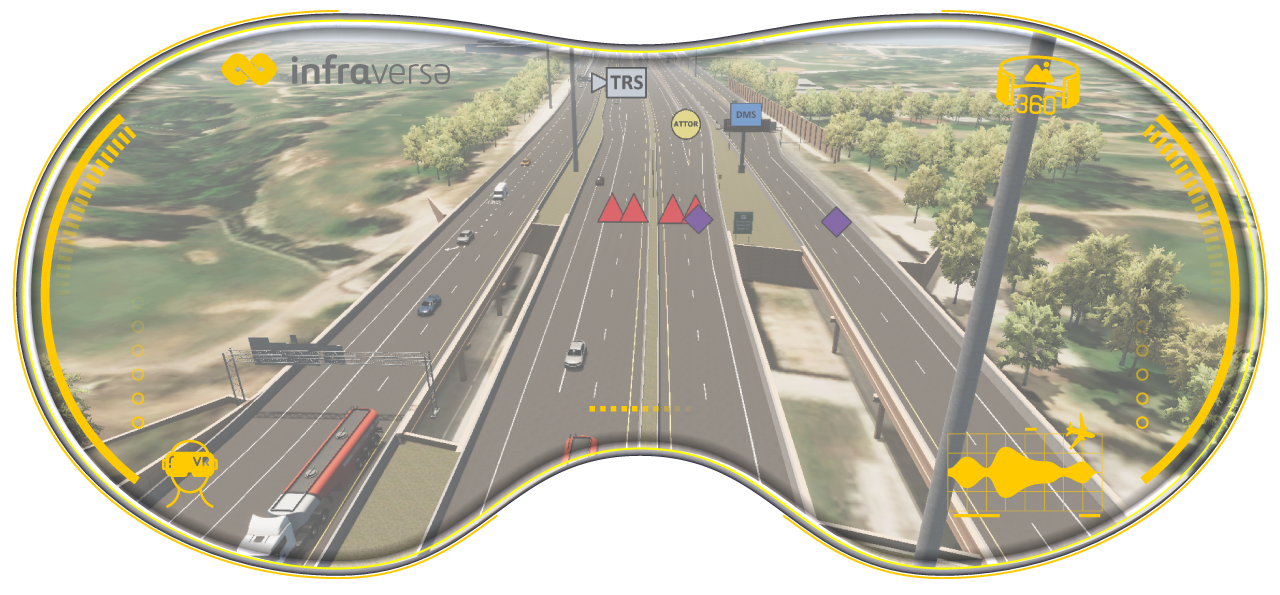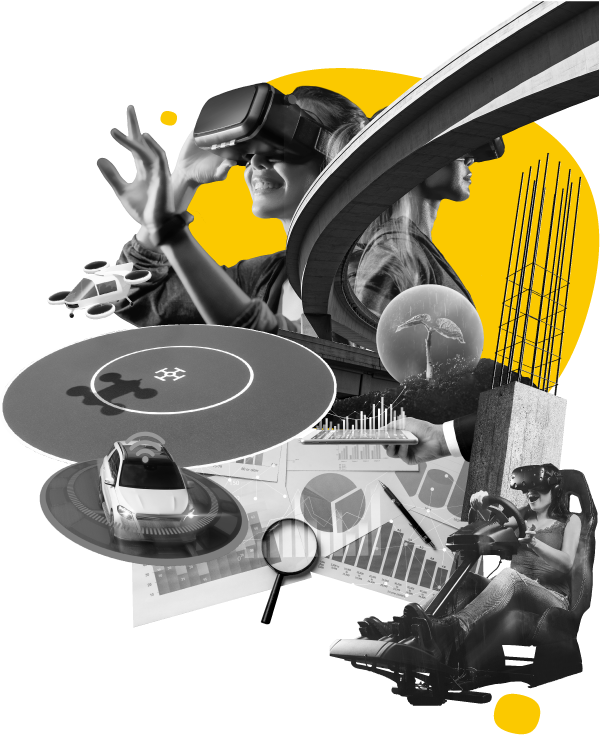Finally, sustainability, considered as one of its main pillars for the creation of higher quality and resilient infrastructures, has led to the implementation of a work program with low carbon footprint materials that aims to identify and standardize the use of more sustainable materials.
Transformation
In an increasingly changing world, Ferrovial relies on transformation as a key lever to adapt to the constantly evolving demands of the market and its customers. In innovation, business transformation is managed in the centers of excellence, knowledge centers in three critical areas: mobility, asset management and energy and sustainability.
During 2022, the Energy and Sustainability Center of Excellence was launched to directly support the recently created energy business unit. Projects such as Ikongreen and the carbon footprint measurement tool have been developed within this center.
In parallel, Ferrovial promotes the industrialization of the entire construction process by synchronizing the production and assembly of components with the supply chain and logistics planning. To this end, it works on projects that provide modular construction capabilities, automation, robotization, teleoperation and 5G connectivity. Thanks to projects such as AIVIA, it drives the adaptation of its infrastructures to contexts such as those of connected and autonomous mobility.
Continuing to transform Ferrovial’s business is a transversal task that is approached from a global and comprehensive perspective at all stages of the infrastructure lifecycle.
Diversification and growth
By launching new adjacent businesses, and taking advantage of Ferrovial’s internal capabilities and knowledge, the company’s businesses are diversified. For this reason, in 2022 the venture-building process was created to develop and launch business ideas.
The creation of new products and services will continue to increase the value generated for the client, providing new digital channels and additional sources of income. In this context, Ferrovial has launched NextPass, a payment application for Managed Lanes, a new personalized tolling method.
OPEN INNOVATION ECOSYSTEM
Ferrovial has been promoting and increasing its open innovation ecosystem and network of alliances for years. This ecosystem is made up of five agents that nurture, strengthen and complement Ferrovial’s knowledge, capabilities and talent.
The first of these agents is the relationship with universities and research centers. It is worth noting the research collaboration with the Massachusetts Institute of Technology (MIT) through the energy initiative (MITEI), renewed in 2021 for a third five-year period, and through the MIT Mobility Initiative (MMI), which Ferrovial has joined in 2022 as a founding member. The aim of the latter agreement is to contribute to the design of a mobility system that is sustainable, safe, clean and inclusive.
Startups and Venture Capital funds are the second and third key players. During 2022, the successful relationship with the brightest entrepreneurs in the major global innovation hubs in the United States, Europe and Israel has continued to connect them with the organization and accelerate the innovation process. In this regard, the company is always open to test the most disruptive technologies and business models in its infrastructures and prove their validity in a real environment.
In relation to Venture Capital funds, Ferrovial has expanded its investment strategy by acquiring stakes in specialized venture capital funds whose investment strategy focuses on construction, energy and mobility. This is the case of Atómico, a benchmark venture capital fund in Europe, in which Ferrovial continues to be one of the participating corporate partners.
The fourth agent is the Public Innovation Agencies, which are responsible for establishing industrial policy, mainly by facilitating access to public funding. These programs, of different types, are supported both by the Spanish Recovery and Resilience Plan (NextGenEU) and European initiatives linked to the EU Community Framework (2021-2027), with instruments such as Horizon Europe, LIFE or specific thematic vehicles such as the Climate KIC, EIT Digital, EIT Urban Mobility or InnoEnergy, in addition to their counterparts in the United States. Ferrovial has a portfolio of initiatives aimed at deploying smart and resilient infrastructures to improve the energy efficiency and sustainability of the territory.
Collaboration with large corporations is the fifth agent. The aim is to seek synergies, complementing knowledge capabilities and sharing best practices in innovation management. In this area, Ferrovial’s internal talent stands out, enabling it to leverage its own intellectual capital to devise and market projects in the most efficient way, favoring collaboration among employees.


